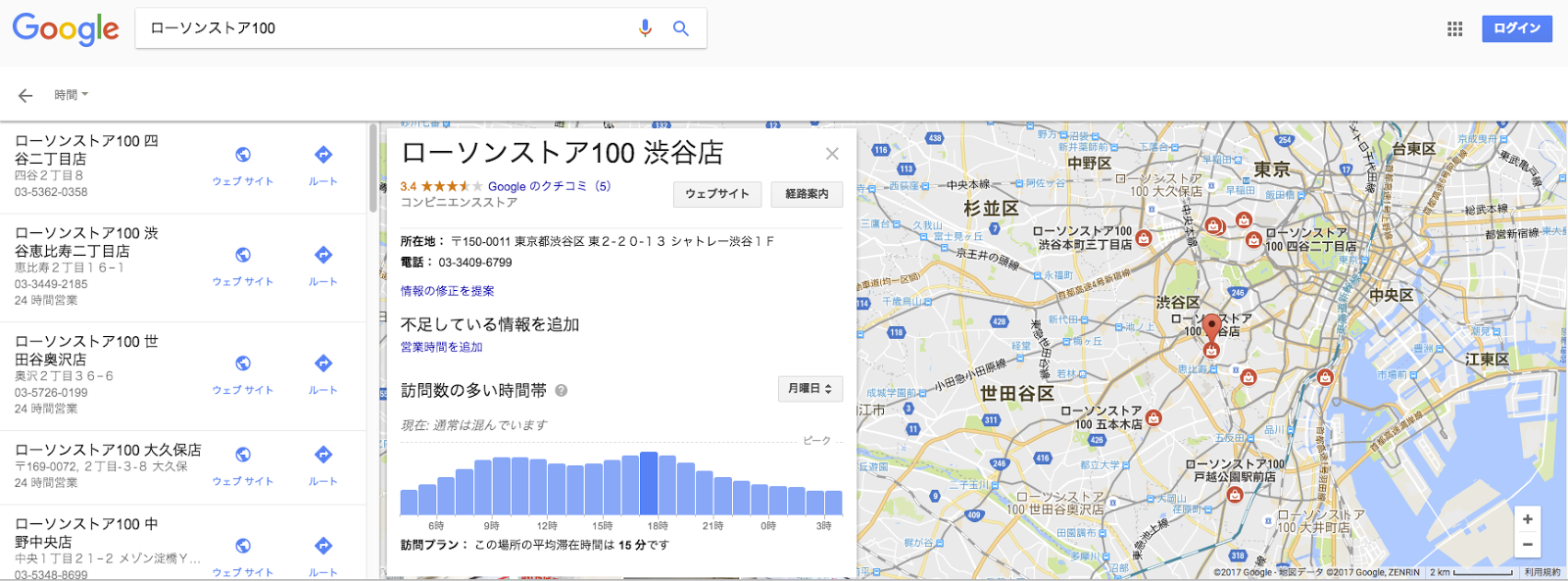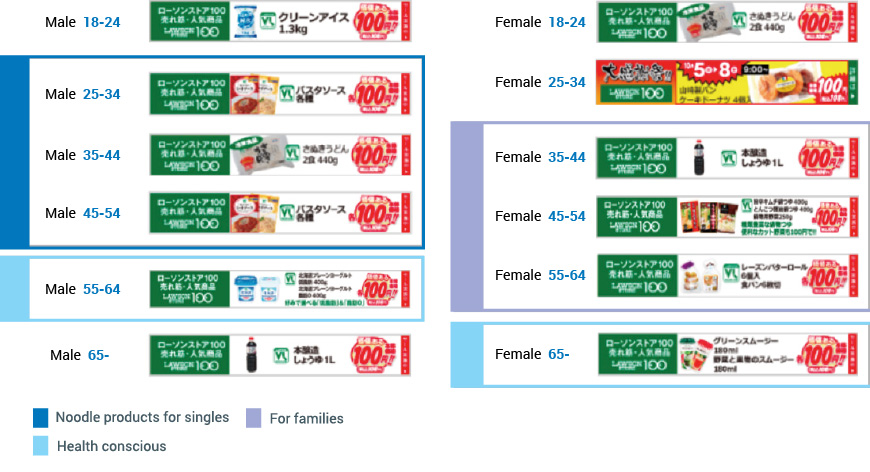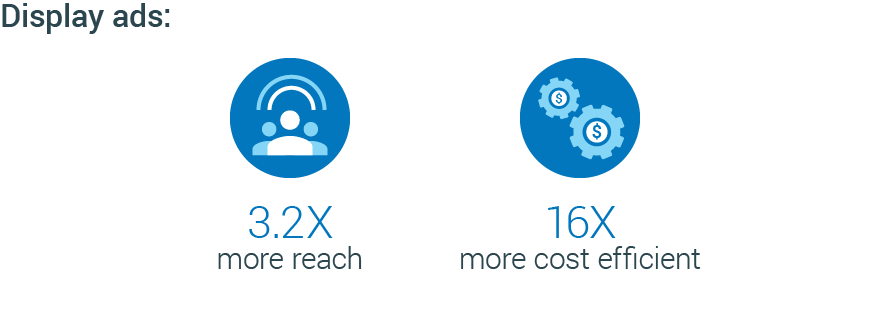For years, Lawson Store100 reached customers across Japan with the retail industry’s main medium: leaflets. With consumers moving online, the convenience store retailer decided to test digital display ads against the traditional approach. The display ads outperformed conventional leaflets on nearly every level, boosting reach and driving sales.
GOALS
Determine effectiveness of leaflets vs. digital display ads
Expand market share
Increase in-store sales
Improve ad spend efficiency
APPROACH
Launched campaign to test digital ads against leaflets
Delivered display ads to customers near its stores with location targeting
Served banners tailored to different audiences with affinity targeting
RESULTS
3.2X higher reach vs. leaflets
16X more cost efficient vs. leaflets
66% of total sales driven by customers who only remembered digital ads vs. 11% who only remembered leaflets
In Japan, the market for leaflets reached a whopping 460 billion yen in 2015.1 While declining newspaper circulation has caused the market to shrink, leaflets remain the primary promotional medium for many Japanese retailers. As a convenience store franchise with approximately 800 locations across Japan, Lawson Store100 followed the trends and handed out traditional leaflets near each of its locations to reach its main clientele of senior citizens and housewives.
Looking to capture new customers under 40 and expand its market share, the brand knew it needed to make a change. It was time to try digital display ads. Lawson Store100 set up a rigorous comparison test, ensuring it could match the benefits of conventional leaflets vs. digital display ads.
Complementing conventional leaflets with digital ads
A key benefit of distributing leaflets is the ability to control the date and area in which you want to deliver your message. Lawson Store100 wanted to be able to do the same with digital ads, so it leveraged the geo-targeting capabilities of Google Ads2 to promote a four-day bargain sale.
Lawson Store100 began by registering the location of each of its stores on Google Maps with Google My Business. The brand then used location targeting to deliver display ads to customers within a 1.5–2.5 km radius of each store nationwide. Mirroring the content of its leaflets, Lawson Store100 created banner ads that promoted daily sale items and served them at 9 a.m. every morning.

Compared to leaflet distribution, the brand was easily able to expand the geo-targeting radius of the display ads by 350m, increasing Lawson Store100’s unique reach to 9M people (3.2X more than conventional leaflets).3
Unique advantages of digital banner ads
Depending on the individual, purchase considerations are different. And yet because every print ad has to be identical, the message on conventional leaflets is always the same. With digital ads, the possibilities are endless: messages can be tailored and targeted to age, gender, and preferences.

For example, Lawson Store100 used audience targeting to deliver savings-oriented messaging to saving-oriented affinity groups. The brand also continually monitored how the ads were performing for different groups, and it found interesting insights, such as men 25 to 54 years old preferred pasta sauce, while women 35 to 64 years old preferred soy sauce, soup, bread, and other family-oriented products.
Results: Digital ads vs. leaflets
Lawson Store100 hired a research company to conduct a survey to help determine the in-store impact of the digital campaign. Based on the questionnaire results,4 it was estimated that the display ads were responsible for several hundred thousand more store visits than leaflets.
Not surprisingly, the digital ads were 16X more cost-efficient than leaflets, as cost per visit decreased from 40.8 JPY to just 2.5 JPY.

When calculating the average customer spend during the bargain sale period, Lawson Store100 found that customers who only remembered digital ads spent 53% more than those who only remembered leaflets. Overall, 43% of Lawson Store100’s total revenue was driven by people who remembered the ads. Furthermore, 66% of total sales were driven by customers who remembered seeing only digital ads, compared with 11% driven by customers who only remembered receiving leaflets.
While leaflets drove awareness among women in their 40s, digital ads drove awareness among men in their 30s, which contributed to attracting new customers across the board. The digital campaign allowed Lawson Store100 to expand the immediate reach radius around each of its store locations and to serve ads with messages tailored to different audiences for a fraction of the cost of printing and distributing conventional leaflets.






